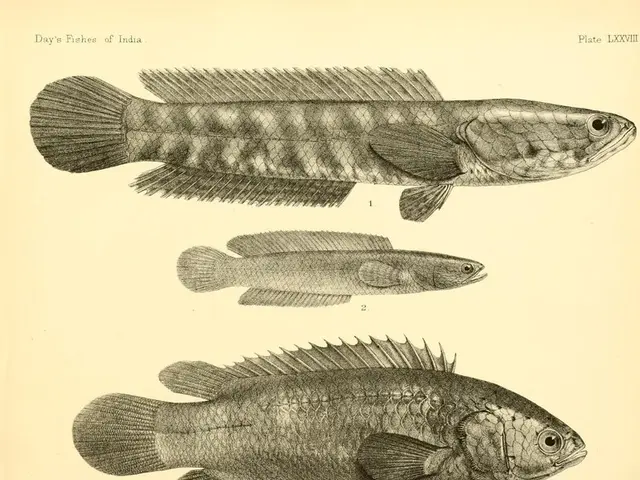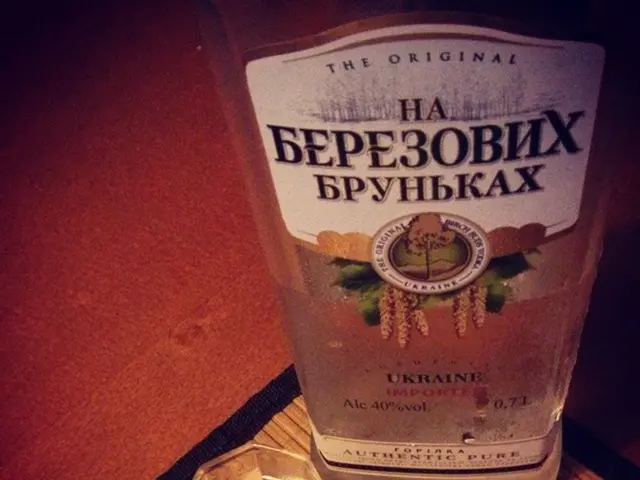Exploring Pangasius: Is it truly harmful and what dishes can be prepared using it?
Pangasius: A Controversial Catfish
Tired of the endless chatter about pangasius? We've got you covered! This freshwater fish from Southeast Asia has been the subject of debate for quite some time now. But, have the concerns been valid? And if you decide to dabble in this fishy business, how should you proceed? We delve into all that and more!
Getting to Know Pangasius
Originating from Cambodia, Thailand, Laos, and Vietnam, pangasius resembles a shark - hence the nickname, Shark Catfish. Typically, it weighs up to 45 kilograms and grows up to 1.5 meters in its natural habitat, but the ones you'll find in the market have a much smaller size.
This fatty fish is primarily frozen before transportation and available as deep-frozen fillets in the market. Serving as a great protein source, it offers 15 grams per 100 grams, with a low calorie count of 89 kcal per 100 grams.
Is Pangasius Really a Health Threat?
For years, rumors have swirled that pangasius is harmful to health, linking it to the polluted rivers of Chaophraya and Mekong. While it's true that these rivers are rich in fertilizers and industrial waste, the reality is a bit more reassuring.
Imports of pangasius to Russia come predominantly from Vietnam, where the fish export industry is substantial. Given the importance of this business, it is highly unlikely for producers to risk customers with poor-quality products. Smaller enterprises may have sold substandard fillets in the past, but since 2019, Vietnam has established a special commission for fish export. This commission checks the quality, adherence to production standards, and feed used.
From Pollution to Production Standards
While there were initial concerns about pangasius, the situation has improved significantly with better regulation and quality control measures. Industries that farm pangasius typically use artificial ponds and feed catfish with dried fish, shrimp, and legumes. Moreover, enterprises handle the freezing of fillets and undergo a second inspection upon entering Russia, minimizing the risk of parasite growth.
Choosing the Perfect Pangasius Fillet
Purchasing pangasius doesn't have to be a daunting task. Follow these simple steps:
- Color: Aim for a white, uniform fillet. The greyer it is, the less flavorful it will be. Any other colors, like yellow, suggest breaches in feeding or storage guidelines.
- Expiration date: Store-bought deep-frozen fillets should be consumed within three months.
- Ice layer: A thicker than 6-8 millimeters ice layer means the fillet has been refrozen with water, making it unsuitable for consumption.
Cooking Up a Storm with Pangasius
Cooking pangasius is a breeze! Just follow these simple rules:
- Thawing: Never thaw fish in a microwave or hot water. Instead, let it sit in the refrigerator for 10-12 hours or at room temperature for three to four hours.
- Preparation: Prior to frying, soak the pangasius in cold, salted water for five minutes and pat it dry with a paper towel. Only then place it on a preheated pan.
- Boiling: Boil pangasius for no more than 8-10 minutes to preserve its structure.
With pangasius, the possibilities are endless! Give these recipes a try: Fried fillet in batter, Baked fillet, Fish à la française, Fish cutlets, Fish casserole with cheese and tomatoes, and many more!
So there you have it. True, there were initial concerns about pangasius, but with ongoing improvements in farming practices and regulations, these fears are now a thing of the past. Embrace pangasius with confidence, experiment with recipes, and enjoy a nutritious addition to your diet!
Further Reading:
- How to freeze eggplant correctly for the winter: from basics to nuances
- All about black wine: what it is, what to pair it with, and more
- Original Russian fish pie recipe: how to make a fish pie
- Ideal dinner for two: five simple ideas that will win your heart
- 10 recipes for spicy peppers for the winter: stock up on fiery snacks
- Despite the controversies surrounding pangasius, originating from Cambodia, Thailand, Laos, and Vietnam, this Shark Catfish is primarily frozen before being sold as deep-frozen fillets in the market, offering a great protein source with a low calorie count.
- Contrary to popular belief, pangasius imports in Russia primarily come from Vietnam, where industries follow quality control measures, minimizing risks of selling substandard products and ensuring consumer safety.
- In terms of health-and-wellness, cooking and enjoying pangasius is part of a balanced lifestyle, especially when paired with nutritious side dishes and mindful portion control, according to the latest science in the food-and-drink sector.
- When purchasing a pangasius fillet, look for a white, uniform appearance, check the expiration date, and ensure the ice layer is not thicker than 6-8 millimeters, as this indicates refrozen fillets are unsuitable for consumption.
- Incorporating pangasius into cooking adds diversity to your lifestyle and meal planning, offering various easy-to-prepare recipes such as Fried fillet in batter, Baked fillet, Fish à la française, Fish cutlets, and Fish casserole with cheese and tomatoes.








